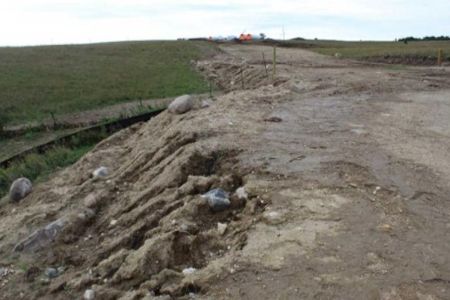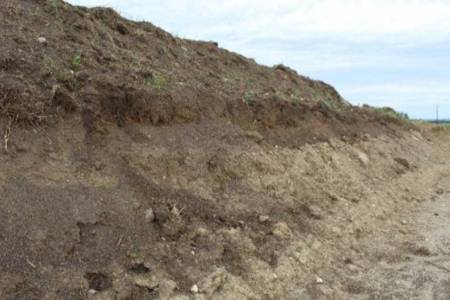By Pete Bauman
Energy development on private lands can result in locally heavy land manipulation. Of particular concern is the manipulation of native grasslands and other sensitive areas and how it will affect those areas in the short-and-long-term. SDSU Extension and partner organizations have developed a fact sheet titled Best Management Practices Guide for Restoration of Native Grasslands and Sensitive Sites Resulting from Energy or Industrial Development. This fact sheet is designed as a resource to landowners and energy representatives as a guide for negotiating and mitigating impacts to grasslands and sensitive sites and is available on the SDSU Extension website.
Once native grassland is converted, it is impossible to completely restore all ecological functions of the soil and vegetation. Therefore, landowners contemplating allowing energy development should understand that a return to pre-disturbance conditions isn’t feasible, if native grassland health is a goal, avoiding construction disturbance on these sites is the prefered option.
If energy development or other disturbances are allowed it is important that the landowner thoroughly understand the contract language and ensure that the contract reflects short-and-long-term expectations. Energy development easements or contracts that allow for construction of temporary roads or corridors may not adequately explain the level of manipulation planned for the site, and thus it is up to landowners to self-educate and be mindful of what is allowed under the contract.

Topics to Consider
A long dirt road running through grassland to a wind energy construction project.
The SDSU Extension fact sheet encourages landowners to carefully consider whether energy development is appropriate for their land. If the decision is made to participate in an energy development project, the fact sheet is designed to guide landowners and energy developers through a checklist of topics to consider for the native grassland or sensitive site prior to finalizing a contract. The list of topics includes:
- Legal review of contract parameters and retention of copies of contracts and associated forms, permits, etc.
- Seeking advice or input from a rangeland, pasture, grassland, habitat, or ecology professional
- Understanding and clearly defining contract language
- Ensuring existing contracts, easements, or agreements with agencies or lessees are considered and addressed accordingly
- Ensuring permits are acquired if necessary for disturbance of ecological, historic, or sensitive sites
- Ensuring soils are properly removed, stored, and returned to original contours and soil horizons in a timely manner
- Defining vegetation restoration parameters, including seed bed preparation, planting technique and timing, and a list of native species to consider as well as avoidance of all non-native and invasive species
- Defining post-planting management responsibilities and future costs of labor, equipment, and materials to manage restored corridors for long-term success, including but not limited to concerns with weed control, chemical applications, grazing management, etc.

The fact sheet provides landowners and developers a platform for mutual understanding of expectations on the front end, giving landowners a clear picture of short-and-long-term responsibilities of both parties.
This guidance will help landowners prevent poorly written or negotiated contracts that can leave them responsible individually responsible for potentially long-term maintenance expenses of energy corridors.
To view or print the fact sheet, visit Best Management Practices Guide for Restoration of Native Grasslands and Sensitive Sites Resulting from Energy or Industrial Development.
Source : sdstate.edu